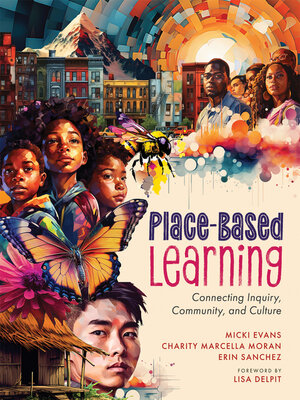Place-Based Learning
ebook ∣ Connecting Inquiry, Community, and Culture (Seven place-based learning design principles to promote equity for all students)
By Micki Evans

Sign up to save your library
With an OverDrive account, you can save your favorite libraries for at-a-glance information about availability. Find out more about OverDrive accounts.
Find this title in Libby, the library reading app by OverDrive.



Search for a digital library with this title
Title found at these libraries:
| Library Name | Distance |
|---|---|
| Loading... |
Understand the impact a sense of place has on education, culture, and community. The authors share seven place-based learning design principles to help educators implement projects smoothly, from start to finish. With their project-planning tools and community asset map, teachers, school coaches, and leaders will be equipped to empower students and promote equity for all.
Grades 4–12 teachers, Iinstructional designers and school leaders will:
Contents:
Foreword by Lisa Delpit
Introduction
Part One: Understand Place-Based Learning Design Principles
Chapter 1: Elevate Ways of Knowing
Chapter 2: Facilitate Purpose-Driven Inquiry
Chapter 3: Build Authentic Community Partnerships
Chapter 4: Empower Student Ownership
Chapter 5: Engage in Feedback, Revision, and Reflection
Chapter 6: Create an Authentic Community Product
Chapter 7: Embed Culture in Teaching and Learning
Part Two: Designing Place-Based Journeys
Chapter 8: Liberate Teaching Practices and Decolonize Curricula
Chapter 9: Unpack Biases and Assumptions and Uncover Community Assets
Chapter 10: Pathways to Liberatory and Decolonized Assessment Practices
Chapter 11: Plan Place-Based Learning Projects
Part 3: Supporting and Sustaining PBL Implementation With an Equity Lens
Chapter 12: Sustain Place-Based Learning Through the Practitioner's Round
Chapter 13: Dismantle the Barriers to Place-Based Learning
Chapter 14: Monitor and Assess the Efficacy of Place-Based Learning and Build Capacity
Epilogue
Appendix
References and Resources
Index







